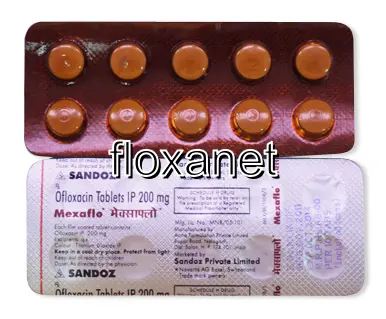| Package | Dosage | Price | Price per Dose | |
|---|---|---|---|---|
| Dosage: 100mg | ||||
| 360 pill | 100mg | CAD830.25 | CAD2.31 | |
| 180 pill | 100mg | CAD442.02 | CAD2.46 | |
| 120 pill | 100mg | CAD320.94 | CAD2.67 | |
| 90 pill | 100mg | CAD255.60 | CAD2.84 | |
| 60 pill | 100mg | CAD186.41 | CAD3.09 | |
| 30 pill | 100mg | CAD101.84 | CAD3.36 | |
| 20 pill | 100mg | CAD69.17 | CAD3.50 | |
| 10 pill | 100mg | CAD38.42 | CAD3.79 | |
| Dosage: 200mg | ||||
| 360 pill | 200mg | CAD1,080.10 | CAD3.00 | |
| 180 pill | 200mg | CAD549.65 | CAD3.06 | |
| 120 pill | 200mg | CAD384.37 | CAD3.21 | |
| 90 pill | 200mg | CAD303.64 | CAD3.36 | |
| 60 pill | 200mg | CAD217.16 | CAD3.61 | |
| 30 pill | 200mg | CAD115.30 | CAD3.86 | |
| 20 pill | 200mg | CAD80.70 | CAD4.04 | |
| 10 pill | 200mg | CAD42.26 | CAD4.13 | |
| Dosage: 400mg | ||||
| 180 pill | 400mg | CAD601.54 | CAD3.34 | |
| 120 pill | 400mg | CAD422.80 | CAD3.52 | |
| 90 pill | 400mg | CAD340.16 | CAD3.79 | |
| 60 pill | 400mg | CAD245.99 | CAD4.09 | |
| 30 pill | 400mg | CAD134.52 | CAD4.46 | |
| 20 pill | 400mg | CAD94.15 | CAD4.67 | |
| 10 pill | 400mg | CAD48.03 | CAD4.86 | |

Ofloxacin Description
Overview of Ofloxacin
Ofloxacin is a widely used antibiotic belonging to the fluoroquinolone class. It is effective against a broad spectrum of bacterial infections, making it a versatile choice in the treatment of various ailments. Ofloxacin works by inhibiting bacterial DNA replication enzymes, which ultimately leads to the bacteria's death. Due to its potency and effectiveness, it is commonly prescribed by healthcare providers for urinary tract infections, respiratory infections, skin infections, and even certain sexually transmitted diseases. When used appropriately, ofloxacin can significantly accelerate recovery and reduce complications associated with bacterial infections.
Advantages of Using Ofloxacin
One of the main benefits of ofloxacin is its broad-spectrum activity. It targets many different types of bacteria, including both Gram-positive and Gram-negative strains. This makes it a convenient option for empiric therapy, especially when the particular bacterial pathogen has not yet been identified. Patients often appreciate the quick onset of relief that ofloxacin provides, as symptoms tend to improve within a few days of treatment. Additionally, ofloxacin is available in various forms, including tablets, ophthalmic solutions, and ear drops, offering flexibility depending on the infection site. Its once or twice daily dosing schedule is also considered convenient, which can improve patient compliance.
Potential Side Effects and Precautions
Despite its benefits, ofloxacin is not without potential side effects. Some users may experience gastrointestinal disturbances, such as nausea, diarrhea, or stomach pain. Less commonly, individuals may encounter headaches, dizziness, or skin reactions. Because of its impact on cartilage development, ofloxacin is generally not recommended for use in children or adolescents, except under specific circumstances. People with a history of tendon disorders or those on concurrent corticosteroid therapy should be cautious, as fluoroquinolones have been associated with tendonitis and tendon rupture. It is essential for patients to inform their healthcare provider of any underlying health issues or medication allergies before starting therapy with ofloxacin.
Usage and Dosage Recommendations
The dosage of ofloxacin varies depending on the type and severity of the infection. In most cases, adults are prescribed 200 to 400 milligrams once or twice daily. For urinary tract infections, a typical course might last 3 to 7 days, while respiratory or skin infections could require a longer duration. It is crucial to complete the full course prescribed, even if symptoms improve before the end of treatment. Patients should take the medication with a full glass of water and avoid taking it with dairy products or calcium-fortified juices, as these can impair absorption. Precise adherence to the healthcare provider’s instructions ensures optimal effectiveness and minimizes the risk of resistance development.
Interactions and Contraindications
Ofloxacin can interact with various medications, which may influence its effectiveness or increase the risk of adverse effects. For instance, concurrent use of antacids containing magnesium or aluminum, sucralfate, or iron supplements should be spaced out by at least two hours. Combining ofloxacin with other drugs that prolong the QT interval, such as certain antiarrhythmics, may increase the risk of heart rhythm disturbances. Ofloxacin is contraindicated in individuals with a history of hypersensitivity to fluoroquinolones. Pregnant and breastfeeding women are advised to avoid this medication unless specifically instructed by their healthcare provider. Proper medical evaluation is necessary to determine if ofloxacin is suitable for each individual case.
